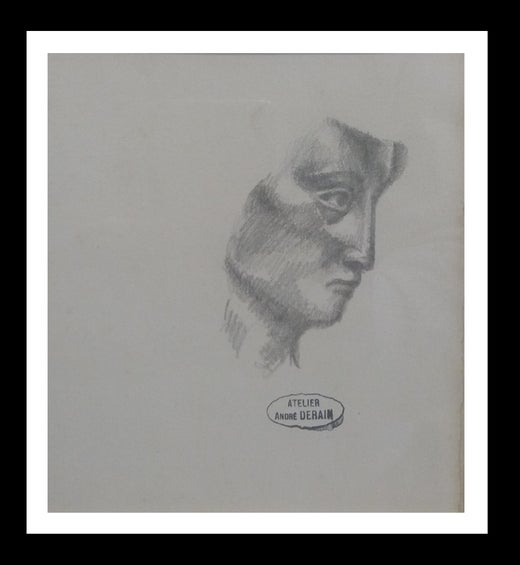André DerainZodiac, Modern Woodblock by Andre Derain20th Century
20th Century
About the Item
- Creator:André Derain (1880-1954, French)
- Creation Year:20th Century
- Dimensions:Height: 17.5 in (44.45 cm)Width: 13 in (33.02 cm)
- Medium:
- Movement & Style:
- Period:
- Framing:Framing Options Available
- Condition:
- Gallery Location:Long Island City, NY
- Reference Number:Seller: 827401stDibs: LU46614564682
André Derain
André Derain is best known as a leading figure of the avant-garde movement and — alongside Henri Matisse — a cofounder of Fauvism at the turn of the 20th century. Derain’s innovative use of expressive colors and simplified forms in his figurative paintings, landscapes and portraits continue to dazzle collectors and art enthusiasts everywhere.
Born in 1880 in Chatou, France, Derain began his formal art training at age 18 at the Académie Camillo, where he met Matisse and Maurice de Vlaminck. In 1905, Derain, Matisse and de Vlaminck exhibited their works at the Salon d’Automne in Paris, where critic Louis Vauxcelles used the word fauves (wild beasts) to describe the loosely connected collective of artists’ prioritization of audacious, vivid color in their energetic works, eventually leading to wide adoption of the term Fauvism.
In 1905 and 1906, Derain traveled to London, where he produced a series of Fauvist “form through color” paintings. These included The London Bridge, Charing Cross Bridge and A Corner of Hyde Park. After seeing a retrospective of Paul Gauguin’s work, Derain painted The Dance, a nude that is demonstrative of Gauguin’s influence in its bold, flat colors and in Derain’s depiction of primitive dancing figures.
In 1910, Derain destroyed many of his unsold works and began painting landscapes in the Cubist style of Paul Cézanne. He befriended Pablo Picasso and grew interested in African tribal art. After World War I, he focused on figurative and nude drawings and, in the early 1920s, abandoned Fauvism and Cubism altogether in favor of classical art. In 1930, the artist publicly condemned modernism, leading to his ostracization by the avant-garde community.
Derain was later honored with a retrospective of his works at the Kunsthalle in Bern, Switzerland. Additionally, the Exposition des Artistes Independants invited Derain to exhibit in 1937.
Derain’s wide range of styles — from Fauvism and Cubism to classicism and Postimpressionism — influenced many artists throughout his lifetime. Today, Derain’s work is held in the permanent collections of the Museum of Modern Art in New York, the Tate gallery in London, the Musée d’Orsay in Paris and the State Hermitage Museum in St. Petersburg.
On 1stDibs, discover original André Derain prints, drawings and paintings.
You May Also Like
20th Century Modern More Prints
Woodcut
20th Century Modern More Prints
Woodcut
1920s Modern Figurative Prints
Woodcut
1920s Modern Figurative Prints
Woodcut
1930s Modern Portrait Prints
Woodcut
Mid-20th Century Modern Landscape Prints
Lithograph, Woodcut
Late 20th Century American Modern Portrait Prints
Woodcut
1970s American Modern More Prints
Woodcut
1930s American Modern Figurative Prints
Paper, Woodcut
1940s American Modern Animal Prints
Woodcut
More From This Seller
View All1920s Modern Abstract Prints
Woodcut
1920s Modern Abstract Prints
Woodcut
1920s Modern Abstract Prints
Woodcut
1930s Modern Abstract Prints
Woodcut
1920s Modern Abstract Prints
Woodcut
1970s Modern Portrait Prints
Woodcut
Recently Viewed
View AllRead More
Romare Bearden’s Humanity Infuses His Bright, Bold Art
Through collage, painting and printmaking, the artist foregrounded Black life in America in revolutionary new ways.
Chryssa’s 1962 Neon Sculpture Was Way ahead of the Art-World Curve
By working with lettering, neon and Pop imagery, Chryssa pioneered several postmodern themes at a time when most male artists detested commercial mediums.
